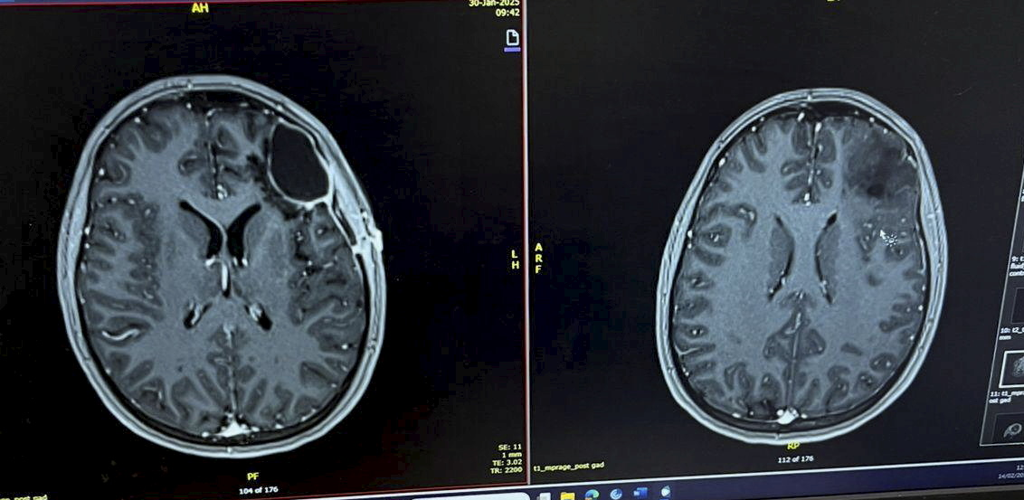What doctors first diagnosed as heatstroke turned out to be something far more serious: a brain tumor. Moli Morgan, a 22-year-old woman from Wales, suffered two seizures while on vacation in Turkey—episodes that were dismissed as dehydration and exposure to heat. But a medical review upon her return to the United Kingdom uncovered a far more alarming diagnosis: a 4-centimeter glioma, a type of malignant brain tumor.
A Medical Emergency Misread
The seizures occurred in rapid succession while Morgan was vacationing in Antalya. She had no prior history of seizures and had only experienced occasional mild migraines. Resort medical staff attributed her symptoms—nausea, vomiting, dizziness, and confusion—to heatstroke, a plausible assumption given the climate and setting.
Morgan flew home the following day. It was only after her sister, a nurse, insisted on further evaluation that doctors performed scans revealing a tumor lodged in the front-left portion of her brain. The diagnosis: a glioma, a tumor originating in the glial cells that support and protect neurons.
Life-Saving Surgery—While Awake
Morgan underwent an awake craniotomy at Royal Stoke University Hospital, a procedure often used when tumors are located near parts of the brain that control speech, movement, or vision. To protect her ability to speak her native Welsh, doctors kept her conscious during the four-hour operation, asking her to repeat words and identify objects while the surgical team excised the tumor.
“She was incredible,” said one member of the surgical team. “Her ability to remain calm and responsive helped us remove the tumor while preserving key brain functions.”
Post-surgery scans indicated the operation was successful. Morgan has since returned home and will undergo routine monitoring every six months.
Gliomas: Aggressive and Often Misunderstood
Gliomas represent a broad category of brain tumors that can vary in severity. While some are slow-growing and benign, others are highly aggressive. Symptoms include:
- Seizures
- Persistent headaches
- Cognitive or memory difficulties
- Speech or language disruptions
- Changes in personality or behavior
Because many of these symptoms can be subtle—or mimic other conditions—diagnoses are often delayed. Experts note that early detection is essential, particularly in younger patients where the disease may present atypically.
“There is a tendency to attribute symptoms like fatigue or headaches to stress, dehydration, or other benign causes,” said a neurologist not involved in Morgan’s care. “But when seizures occur, especially in someone with no history, imaging should never be delayed.”
A Reminder About Medical Vigilance
Morgan’s story underscores the risks of diagnostic assumptions—particularly in unfamiliar environments like foreign travel. While heatstroke is a genuine threat, especially in high-temperature destinations, serious neurological conditions can present similarly.
Her family has since raised funds in gratitude for the medical team that saved her life. “I feel so lucky,” Morgan said. “Had my sister not pushed for that second opinion, I might still be unaware.”
At a Glance: What to Know About Gliomas
| Key Symptom | Description |
|---|---|
| Seizures | Often the first and most visible warning sign |
| Headaches | New or worsening, especially in the morning |
| Speech changes | Difficulty forming or recalling words |
| Personality shifts | Mood swings, confusion, or memory lapses |
| Diagnosis | MRI or CT scan followed by biopsy |
Moli Morgan’s case is not just a personal health story—it is a cautionary tale about the dangers of misdiagnosis, especially when symptoms emerge in unfamiliar settings. As she recovers, her experience serves as a reminder that not all health scares are what they seem, and sometimes, asking for a second opinion can make all the difference.


